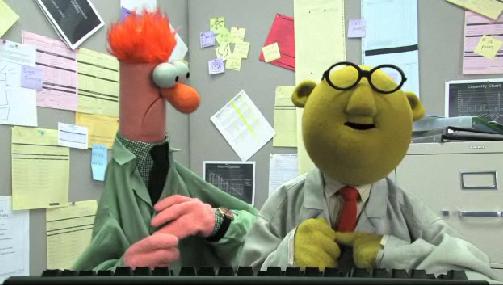Day: September 26, 2013
Rules of the lab
Nothing is as easy as it looks.
If an experiment works, something has gone wrong.
All scientific discoveries are first recorded on napkins or tablecloths. Engineering advances are drawn inside matchbook covers. Keep supplies of them handy at all times.
Everything takes longer than you think.
Anything that can go wrong will go wrong. If there is a possibility of several things going wrong, the one that will cause the most damage will be the one to go wrong. If anything simply cannot go wrong, it will anyway. If you perceive that there are four possible ways in which a procedure can go wrong, and circumvent these, then a fifth way, unprepared for, will promptly develop.
When you don’t know what you’re doing, do it neatly.
Remember that your supervisor is a busy person – if he/she isn’t, change your supervisor
Experiments must be reproducible, they should fail the same way each time.
Never replicate a successful experiment
First draw your curves, then plot your data.
An experiment may be considered successful if no more than half the data must be discarded to agree with the theory.
Experience is directly proportional to equipment ruined.
Always keep a record of your data. It indicates that you have been working.
To do a lab really well, have your report done well in advance.
If you can’t get the answer in the usual manner, start at the answer and derive the question.
In case of doubt, make it sound convincing.
Do not believe in miracles – rely on them.
Team work is essential, it allows you to blame someone else.
All unmarked beakers contain fast-acting, extremely toxic poisons.
No experiment is a complete failure. At least it can serve as a negative example.
Any delicate and expensive piece of equipment will break before any use can be made of it.
If nobody uses it, there’s a reason.
Always proofread carefully to see if you any words out. No one you ask for help will see the mistakes either.
If you know what you’re doing, how long it will take, or what it will cost, it isn’t research.
For every complex problem, there is a solution that is simple, neat, and wrong.
When all else fails, read the instructions.
If everything seems to be going well, you have obviously overlooked something.
Every solution breeds new problems.

